Morris Marina - was it really that bad?
Discussion
Yertis said:
Had he not destroyed these 'halo' products I wonder if things might have been different for BL? The TR8 could have been a great rally car. Admittedly it would have had to go head-to-head with a new german rally car, itself being used as a halo product to hoik its brand up to the big league.
A factory TR8 in the UK would have made TVR's life pretty difficult. The later TR7 Convertible was a very pleasant car to drive as well. Really, the 7 had another 4-5 years of life left with only minor tweaking (V8 and 2 litre O Series) and Edwardes made a mistake. Yertis said:
Had he not destroyed these 'halo' products I wonder if things might have been different for BL? The TR8 could have been a great rally car. Admittedly it would have had to go head-to-head with a new german rally car, itself being used as a halo product to hoik its brand up to the big league.
To be brief (since this is getting off-topic and has already been covered in other threads on PH):The time for 'keep the halo products around to lift the image of the ordinary stuff' had long gone by 1980. BL was almost literally on life support and, with Mrs Thatcher in government, was having to justify every single one of the billions of pounds Edwardes managed to extract from a very sceptical Treasury.
As it was, Edwardes didn't get a blank cheque. He got enough to accelerate completion of the Metro (with the attendant modernisation and expansion of Longbridge) but at the cost of putting the Maestro/Montego project on pause. He had the Honda deal to revitalise Triumph and Rover. He got the money to set Land Rover free from Rover, develop what would become the Defender and lift the Range Rover upmarket.
There simply wasn't the money or other resources to properly modernise the sports car lineup. Speke had been closed, Canley was due for closure with the end of Spitfire and Dolomite production and car production at Solihull was due to end in order to free up space for Land Rover production. Abingdon, for all its harmonious labour relations and consistently good build quality, was only ever an assembly plant rather than a manufacturing facility and was essentially pre-war in many of its methods - cars were still pushed along a wooden trackway by hand and were largely assembled by skilled labourers with hand tools.
There was a global recession courtesy of the 1979 Iranian Revolution. Sports car demand worldwide was on the decline due to a combination of changing tastes (the youngsters who had bought sports cars in the 1960s were grown ups with families now), alternative products (hot hatchbacks), the sheer age of many sports car offerings (MGB, Midget, Spitfire, Alfa Spider) and the economic situation. That economic situation caused the exchange rate between the GBP and the USD to change strongly to the UK's detriment and almost overnight it became impossible for BL to sell British-made sports cars in North America at a profit, and that had always been the financial bedrock of the sports car business.
Even with the proposed TR7 range sort of 'ready to go', it would have needed £millions that simply weren't available to BL to bring to production and would have required saving either Speke, Canley or Abingdon and then gutting whichever plant was chosen to modernise it and tool-up. The TR7 design dated back to the early 1970s and so would have needed an even more expensive second-generation for the 1980s at a time when demand for sports cars in general had largely evaporated.
Given the resources he had to work with and the directives from government (save the mass-market car division), Edwardes made exactly the right choice - axe all the old-fashioned slow-selling sports cars and their factories, put the MG badge on hot-hatch variants of the new Austin models and keep projects for a new MG sports car ticking over in the background for if/when the time is right to use them.
Yertis said:
2xChevrons said:
... than it could conceivably ever return in profit while the high-volume car division was still struggling for its very existence so in 1980 he shut down the entire sports car side of the business.
Had he not destroyed these 'halo' products I wonder if things might have been different for BL? The TR8 could have been a great rally car. Admittedly it would have had to go head-to-head with a new german rally car, itself being used as a halo product to hoik its brand up to the big league. cardigankid said:
Yertis said:
2xChevrons said:
... than it could conceivably ever return in profit while the high-volume car division was still struggling for its very existence so in 1980 he shut down the entire sports car side of the business.
Had he not destroyed these 'halo' products I wonder if things might have been different for BL? The TR8 could have been a great rally car. Admittedly it would have had to go head-to-head with a new german rally car, itself being used as a halo product to hoik its brand up to the big league. TR4 total sales 40253
TR5 total sales 2947
TR6 total sales 91850
TR7 total sales 115000
The US market was THE market for sports cars total TR6 production 91850 - just 8370 sold in UK)
The straight six could never pass emissions tests in US. And they say Rover could not produce enough V8s (3500 & Range Rover)
The big issue at the time (other than petrol crisis) was safety. 'They' were going to ban convertibles in US hence no convertible Mustang or Caddy - unfortunately BL didn't really work around the problem in the 'best' way, ie manufacture the car a a convertible THEN sort out a hardtop. The aftermarket (eg Lenham) hardtops follow the shape of the DH. To my mind look better than the backward sloping FHC (IMHO).
But ultimately production problems strikes / quality etc were the final nail.
Had they made better developed versions.................
Back on topic, cast your eyes on these customised Morris Marina beauties:
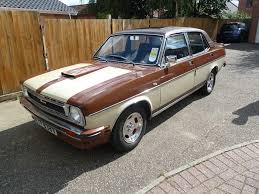
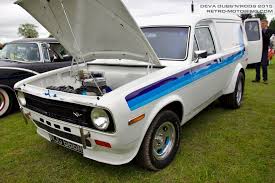
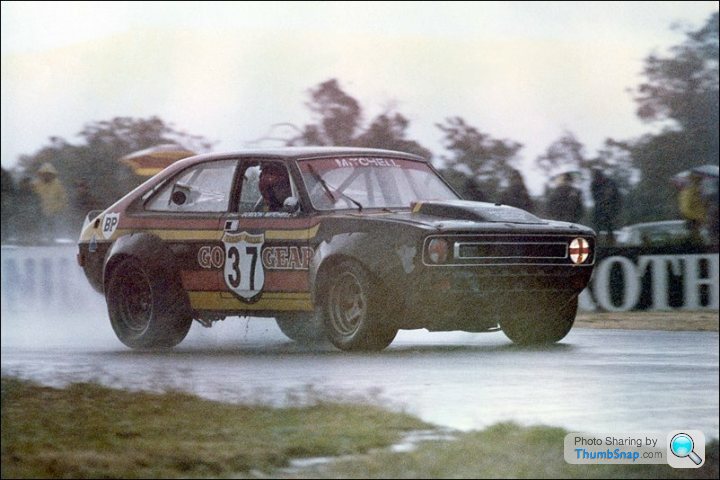
And, if you weld up the doors (and squint your eyes)........ your very own General
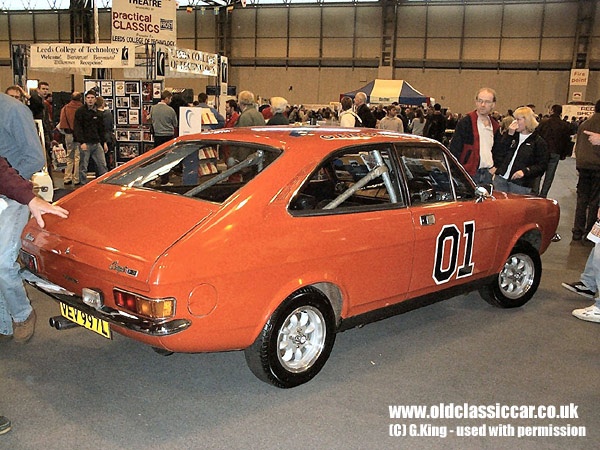
2xChevrons said:
Given the resources he had to work with and the directives from government (save the mass-market car division), Edwardes made exactly the right choice - axe all the old-fashioned slow-selling sports cars and their factories, put the MG badge on hot-hatch variants of the new Austin models and keep projects for a new MG sports car ticking over in the background for if/when the time is right to use them.
How did the price of the late MGB and MGB GT compare with that of the Golf GTI? I have a feeling the MGB GT was more expensive than the Golf. williamp said:
Edwardes' book is a good read. He says the MG cars were strong sellers, but making huge losses. Every penny counted, so they went back to their roots as hot versions of ordinary cars. Was Morris, now Austin..
I haven't read 'Back From The Brink' in a long while, so I can't remember exactly how Edwardes puts it, but the profitability of MG is a matter of perspective. Contrary to popular perception, MGB sales actually steadily increased in the mid/late 1970s despite the introduction of the greatly inferior rubber-bumper versions. Sales dipped in 1978/79 in the recession then climbed back 'on trend' in 1980. At this time the MGB was outselling the Golf GTI in the UK by three to one (mostly a comment on the restrictive availability of the VW, but it does undermine the usual 'the hot hatch wiped out the sports car' idea).
MG as an entity was operationally profitable in 1979 - it covered the costs of making, distributing, marketing, selling and servicing the MGB and the Midget.
What it didn't have was the self-sufficient profit to replace those cars with a viable successor for the 1980s. The situation was rather like the Land Rover Defender in the 21st century - they were only profitable to make because their development costs had been sunk years ago, there was little to no ongoing development being spent on them and they were selling in relatively tiny numbers to a dedicated band of enthusiasts who wouldn't really consider ever buying anything else. As soon as you introduce the costs and risks of a genuinely new MG sports car the whole enterprise becomes unviable. It had been that way all the way through MG's history - it only made economic sense to build MG sports cars when they could share their drivetrain and running gear with high-volume Morris or BMC products. BL tried to ape that by proposing a shared platform between Triumph and MG.
Here's where the Marina comes in.
Since the early 1970s BL engineers had known that the old B-Series engine (as used in the MGB and the Marina) was outclassed. It suffered especially when laden with the emissions control and anti-smog gear needed to be sold in North America (and even more so in California). By 1974 a fully-compliant MGB with a 1.8 B-Series that made 95bhp in UK spec only made 70bhp.
BL also had great hopes for the Marina in North America, where its straightfoward engineering, relatively large size and coke-bottle styling would play well in the compact car market. The MGB needed to keep selling in America to be viable and the Marina needed a decent US-compliant engine to stand a chance of success. So BL developed what would become the O-Series - in essence an OHC development of the B-Series (becauase BL had just renewed the B-Series crankshaft tooling so the bottom end and cylinder dimensions had to be the same) but with better 'breathing' and, thanks to a belt-driven camshaft and distributor, much more accurate and long-lived tuning.
MG desperately wanted the 2.0-litre O-Series to modernise the MGB, but were told to go to the back of the queue as the Marina, with the potential for many more sales Stateside, had the priority to receive it first. In fact, delays to the O-Series project meant that the Marina went on sale worldwide with the old B-Series. America received the Marina (as the Austin Marina) in February 1973 with the 1.8-litre single-carb B-Series as the only power unit. For 1974, when the new Federal emissions regulations came into force and BL had promised that both the MGB and the Marina would receive the O-Series in order to meet them, it still wasn't ready so the B-Series was strangled even more. The Marina had actually done fairly well in America by the standards of British saloon cars - 23,000 were sold in the first year (albeit a large portion of them were to people who already had MGBs and liked the idea of a more practical car with the same running gear). In 1974 BL was accused of 'dumping' Marinas on the US market at below-cost price and was ordered to raise the sale price. BL insisted this made the car non-viable and withdrew it, although Canada continued to receive Marinas until 1978.
The crazy thing was that the reason for the withdrawal of the Marina from Canada was that 1978 was when the UK-market Marina finally received the O-Series engine (in 1.7-litre form). But BL had decided that the predicted sales volume of the MGB and the Marina in North America did not justify the cost of getting the new engine certified (even though doing so was the whole reason for the engine's existence) so the Marina was axed from North America and the MGB soldiered on with the B-Series.
MG continued to pressure BL to let them fit the O-Series to the MGB - since the bottom end was the same as the B-Series it was a drop-in fitment requiring no re-engineering and the O-Series was now up and running in both the Marina and the Princess. MG produced a string of prototype 'MGB Mk4s' with O-Series engines, including one with fuel injection which produced something like 120bhp, but they were never approved for production.
In the end the MGB was axed in 1980 and one of the factors in the decision to stop production (the main one being the unfavourable USD exchange rate) was that it was by then the only production application of the B-Series engine in petrol form, and there were large savings to be made in shifting production to Unipart for continuing parts and 'crate' engines instead of maintaining volume production at Longbridge.
So the Marina 'hogged' the O-Series to the detriment of the MGB, because the Marina was supposed to sell well in America, even though by the time the engine was available the Marina had been withdrawn from the very market that was the reason for the engine's existence...and MG still weren't allowed to use the engine. British Leyland broad-scale planning (or lack thereof) in a nutshell!
Edit: Just seen this:
Dr Jekyll said:
How did the price of the late MGB and MGB GT compare with that of the Golf GTI? I have a feeling the MGB GT was more expensive than the Golf.
In 1980:MGB GT: £5893
Golf GTI: £5768
These are 'as tested' prices in road tests published during 1980. So the 'B was more expensive, but not by much.
For context, a TR7 at the same time was £5750 and Alfasud 1.5Ti was £5100.
A Morris Ital 1.3HLS (on topic!) was £4397.
Edited by 2xChevrons on Friday 15th November 14:48
2xChevrons said:
To be brief (since this is getting off-topic and has already been covered in other threads on PH):
The time for 'keep the halo products around to lift the image of the ordinary stuff' had long gone by 1980. BL was almost literally on life support and, with Mrs Thatcher in government, was having to justify every single one of the billions of pounds Edwardes managed to extract from a very sceptical Treasury.
As it was, Edwardes didn't get a blank cheque. He got enough to accelerate completion of the Metro (with the attendant modernisation and expansion of Longbridge) but at the cost of putting the Maestro/Montego project on pause. He had the Honda deal to revitalise Triumph and Rover. He got the money to set Land Rover free from Rover, develop what would become the Defender and lift the Range Rover upmarket.
There simply wasn't the money or other resources to properly modernise the sports car lineup. Speke had been closed, Canley was due for closure with the end of Spitfire and Dolomite production and car production at Solihull was due to end in order to free up space for Land Rover production. Abingdon, for all its harmonious labour relations and consistently good build quality, was only ever an assembly plant rather than a manufacturing facility and was essentially pre-war in many of its methods - cars were still pushed along a wooden trackway by hand and were largely assembled by skilled labourers with hand tools.
There was a global recession courtesy of the 1979 Iranian Revolution. Sports car demand worldwide was on the decline due to a combination of changing tastes (the youngsters who had bought sports cars in the 1960s were grown ups with families now), alternative products (hot hatchbacks), the sheer age of many sports car offerings (MGB, Midget, Spitfire, Alfa Spider) and the economic situation. That economic situation caused the exchange rate between the GBP and the USD to change strongly to the UK's detriment and almost overnight it became impossible for BL to sell British-made sports cars in North America at a profit, and that had always been the financial bedrock of the sports car business.
Even with the proposed TR7 range sort of 'ready to go', it would have needed £millions that simply weren't available to BL to bring to production and would have required saving either Speke, Canley or Abingdon and then gutting whichever plant was chosen to modernise it and tool-up. The TR7 design dated back to the early 1970s and so would have needed an even more expensive second-generation for the 1980s at a time when demand for sports cars in general had largely evaporated.
Given the resources he had to work with and the directives from government (save the mass-market car division), Edwardes made exactly the right choice - axe all the old-fashioned slow-selling sports cars and their factories, put the MG badge on hot-hatch variants of the new Austin models and keep projects for a new MG sports car ticking over in the background for if/when the time is right to use them.
You know far more about this than I and your point about the exchange rate is a good one and often overlooked. The time for 'keep the halo products around to lift the image of the ordinary stuff' had long gone by 1980. BL was almost literally on life support and, with Mrs Thatcher in government, was having to justify every single one of the billions of pounds Edwardes managed to extract from a very sceptical Treasury.
As it was, Edwardes didn't get a blank cheque. He got enough to accelerate completion of the Metro (with the attendant modernisation and expansion of Longbridge) but at the cost of putting the Maestro/Montego project on pause. He had the Honda deal to revitalise Triumph and Rover. He got the money to set Land Rover free from Rover, develop what would become the Defender and lift the Range Rover upmarket.
There simply wasn't the money or other resources to properly modernise the sports car lineup. Speke had been closed, Canley was due for closure with the end of Spitfire and Dolomite production and car production at Solihull was due to end in order to free up space for Land Rover production. Abingdon, for all its harmonious labour relations and consistently good build quality, was only ever an assembly plant rather than a manufacturing facility and was essentially pre-war in many of its methods - cars were still pushed along a wooden trackway by hand and were largely assembled by skilled labourers with hand tools.
There was a global recession courtesy of the 1979 Iranian Revolution. Sports car demand worldwide was on the decline due to a combination of changing tastes (the youngsters who had bought sports cars in the 1960s were grown ups with families now), alternative products (hot hatchbacks), the sheer age of many sports car offerings (MGB, Midget, Spitfire, Alfa Spider) and the economic situation. That economic situation caused the exchange rate between the GBP and the USD to change strongly to the UK's detriment and almost overnight it became impossible for BL to sell British-made sports cars in North America at a profit, and that had always been the financial bedrock of the sports car business.
Even with the proposed TR7 range sort of 'ready to go', it would have needed £millions that simply weren't available to BL to bring to production and would have required saving either Speke, Canley or Abingdon and then gutting whichever plant was chosen to modernise it and tool-up. The TR7 design dated back to the early 1970s and so would have needed an even more expensive second-generation for the 1980s at a time when demand for sports cars in general had largely evaporated.
Given the resources he had to work with and the directives from government (save the mass-market car division), Edwardes made exactly the right choice - axe all the old-fashioned slow-selling sports cars and their factories, put the MG badge on hot-hatch variants of the new Austin models and keep projects for a new MG sports car ticking over in the background for if/when the time is right to use them.
Too many people overlook the fact that the dollar went the wrong way, and any profit in the sports car division was to come from the Us. Allied to the emissions and convertible ban that never came, i can see why Edwardes canned it to concentrate on the core product and break union hegemony and keep government funds coming).
Love the pic's and some interesting reading, thanks.
Did the TR7 have the O Series or have I misread that? I'd have thought it was too tall, something which explained the high ride height of the MG efi Maestro.
Iirc the Marina had a 2.0 version, possibly an auto, or overseas, can't remember now.
Did the TR7 have the O Series or have I misread that? I'd have thought it was too tall, something which explained the high ride height of the MG efi Maestro.
Iirc the Marina had a 2.0 version, possibly an auto, or overseas, can't remember now.
alfaspecial said:
cardigankid said:
Yertis said:
2xChevrons said:
... than it could conceivably ever return in profit while the high-volume car division was still struggling for its very existence so in 1980 he shut down the entire sports car side of the business.
Had he not destroyed these 'halo' products I wonder if things might have been different for BL? The TR8 could have been a great rally car. Admittedly it would have had to go head-to-head with a new german rally car, itself being used as a halo product to hoik its brand up to the big league. TR4 total sales 40253
TR5 total sales 2947
TR6 total sales 91850
TR7 total sales 115000
The US market was THE market for sports cars total TR6 production 91850 - just 8370 sold in UK)
The straight six could never pass emissions tests in US. And they say Rover could not produce enough V8s (3500 & Range Rover)
The big issue at the time (other than petrol crisis) was safety. 'They' were going to ban convertibles in US hence no convertible Mustang or Caddy - unfortunately BL didn't really work around the problem in the 'best' way, ie manufacture the car a a convertible THEN sort out a hardtop. The aftermarket (eg Lenham) hardtops follow the shape of the DH. To my mind look better than the backward sloping FHC (IMHO).
But ultimately production problems strikes / quality etc were the final nail.
Had they made better developed versions.................
Back on topic, cast your eyes on these customised Morris Marina beauties:



And, if you weld up the doors (and squint your eyes)........ your very own General

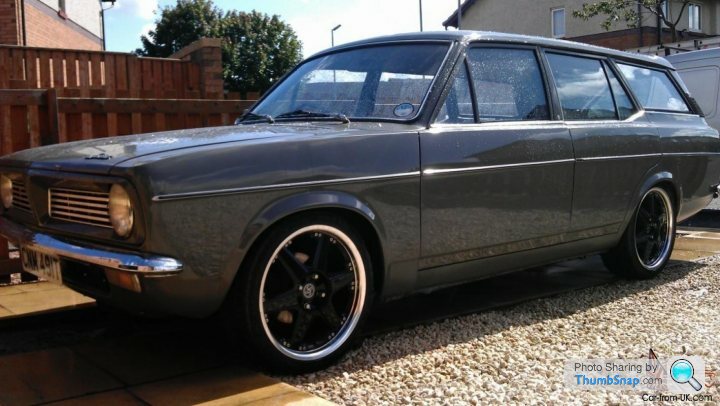
Thanks for the info about Marinas MGs etc, 2xChevrons.
BL were for some reason competing with themselves MG Midget/Triumph Spitfire MGB / TR7. There was barely room for 1 super cheap sports car Midget / Spitty and one mid-sized MGB / TR7 - Mazda realised this, took the mid-route & the MX5 continues to dominate.
The Marina was very conventional, very sensible but poorly executed.
On a similar note, I always quite liked the practicality of Maxis. (Awful cars though!)
There was a chap at Haynes Breakfast Club a year back to had an immaculate Maxi (made between 1969-1981)- according to How Many Left there are under 200 on the roads - even fewer survive than Morris Marinas (1971-1980)
These unloved cars that were a part of our(my) childhood motoring memories will probably be 'all gone' within a decade. Sports cars and sports models of ordinary cars (eg XR3) survive but very few of the bread and butter cars do.
BL were for some reason competing with themselves MG Midget/Triumph Spitfire MGB / TR7. There was barely room for 1 super cheap sports car Midget / Spitty and one mid-sized MGB / TR7 - Mazda realised this, took the mid-route & the MX5 continues to dominate.
The Marina was very conventional, very sensible but poorly executed.
On a similar note, I always quite liked the practicality of Maxis. (Awful cars though!)
There was a chap at Haynes Breakfast Club a year back to had an immaculate Maxi (made between 1969-1981)- according to How Many Left there are under 200 on the roads - even fewer survive than Morris Marinas (1971-1980)
These unloved cars that were a part of our(my) childhood motoring memories will probably be 'all gone' within a decade. Sports cars and sports models of ordinary cars (eg XR3) survive but very few of the bread and butter cars do.
2xChevrons said:
In 1980:
MGB GT: £5893
Golf GTI: £5768
These are 'as tested' prices in road tests published during 1980. So the 'B was more expensive, but not by much.
For context, a TR7 at the same time was £5750 and Alfasud 1.5Ti was £5100.
A Morris Ital 1.3HLS (on topic!) was £4397.
And.....MGB GT: £5893
Golf GTI: £5768
These are 'as tested' prices in road tests published during 1980. So the 'B was more expensive, but not by much.
For context, a TR7 at the same time was £5750 and Alfasud 1.5Ti was £5100.
A Morris Ital 1.3HLS (on topic!) was £4397.
Escort RS2000 Custom was £5387
Capri 3.0S was £5825
Sunbeam Ti was £4666
Sunbeam-Lotus was £7205
Fiat 131 Mirafiori Sport was £5448
BMW 323i was £7550.
The MGB GT was more expensive than a Capri 3.0S........and a whopping 500 quid more than a RS2000.
Sticks. said:
Did the TR7 have the O Series or have I misread that? I'd have thought it was too tall, something which explained the high ride height of the MG efi Maestro.
No, the TR7 had the Triumph slant-four.As the original plan for the entire 'Bullet' project (as it was originally known) was that the car would provide new models for both MG and Triumph on a common platform. As it was we only ever got the TR7 in its base form and the semi-official TR8.
The original plan, which was quickly discarded following BL's financial collapse was (in order of supposed introduction):
1) Basic 2.0-litre TR7 turret-top coupe [as launched]
2) MG version with 2.0-litre O-Series as a convertible [never released]
3) Triumph 'Lynx' - 2+2 extended wheelbase fastback with V8 to replace the Stag [reached pre-production stage before being canned]
4) 2.0-litre 16V Sprint version of TR7 introduced, also adding convertible to TR7 range [pre-production/homologation only]
5) More powerful MG with fuel-injected engine [never released]
6) 3.5-litre V8 Triumph [what we know as the TR8, limited production/homologation only]
7) Breadvan coupe bodystyle introduced for MG [prototyped but never released]
This plan presupposed that the MGB would have been upgraded with the 2.0-litre O-Series before the 'TR7' spin-off was introduced. As it was the planned MG variants never made it beyond styling mock-ups and one rough development hack of the breadvan coupe. One of the styling ideas was a reprofiled front end with 'flip-up' headlamps (Porsche 928-style) with octagonal bezels.
alfaspecial said:
I always quite liked the practicality of Maxis. (Awful cars though!)
There was a chap at Haynes Breakfast Club a year back to had an immaculate Maxi (made between 1969-1981)- according to How Many Left there are under 200 on the roads - even fewer survive than Morris Marinas (1971-1980)
The Maxi gearbox after a few thousand miles was like a bowl of porridge, utter rubbish. I had not long passed my test the foreman said go and pick some stuff up in his company Maxi, I thought I was on Candid Camera, the stick just swirled around it was like pot luck. The car was a great design for its day, but sadly as before BL got there hands on it FAILThere was a chap at Haynes Breakfast Club a year back to had an immaculate Maxi (made between 1969-1981)- according to How Many Left there are under 200 on the roads - even fewer survive than Morris Marinas (1971-1980)
hilly10 said:
alfaspecial said:
I always quite liked the practicality of Maxis. (Awful cars though!)
There was a chap at Haynes Breakfast Club a year back to had an immaculate Maxi (made between 1969-1981)- according to How Many Left there are under 200 on the roads - even fewer survive than Morris Marinas (1971-1980)
The Maxi gearbox after a few thousand miles was like a bowl of porridge, utter rubbish. I had not long passed my test the foreman said go and pick some stuff up in his company Maxi, I thought I was on Candid Camera, the stick just swirled around it was like pot luck. The car was a great design for its day, but sadly as before BL got there hands on it FAILThere was a chap at Haynes Breakfast Club a year back to had an immaculate Maxi (made between 1969-1981)- according to How Many Left there are under 200 on the roads - even fewer survive than Morris Marinas (1971-1980)
A nice Hubnut review https://www.youtube.com/watch?v=WtihHAa0WmY
aeropilot said:
And.....
Escort RS2000 Custom was £5387
Capri 3.0S was £5825
Sunbeam Ti was £4666
Sunbeam-Lotus was £7205
Fiat 131 Mirafiori Sport was £5448
BMW 323i was £7550.
The MGB GT was more expensive than a Capri 3.0S........and a whopping 500 quid more than a RS2000.
As a matter of vague interest, £1 in 1980 roughly equivalent to £4.50 in 2019.Escort RS2000 Custom was £5387
Capri 3.0S was £5825
Sunbeam Ti was £4666
Sunbeam-Lotus was £7205
Fiat 131 Mirafiori Sport was £5448
BMW 323i was £7550.
The MGB GT was more expensive than a Capri 3.0S........and a whopping 500 quid more than a RS2000.
Gassing Station | Classic Cars and Yesterday's Heroes | Top of Page | What's New | My Stuff



